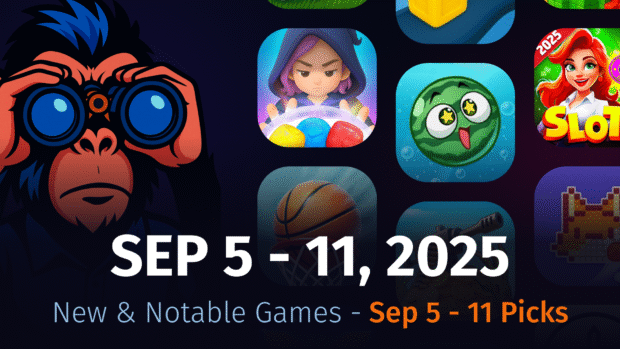
HTML5 Gaming Gold Rush: Discord, Telegram, X & More
AnalysisHighlightsJournal 154 Joseph Kim June 6
The huge potential for games on Discord, Telegram, and every platform with a browser.
After years of false starts, HTML5 gaming is experiencing a stunning reversal—backed by GPU advances from the AI boom, 5G ubiquity, and platforms desperate to escape Apple and Google’s grip. Playgama CEO Dmitry Kachmar reveals why major platforms from Discord to Telegram are racing to become gaming destinations and why, this time, the technology, economics, and timing finally align.
Why this matters to you:
- The app store monopoly is cracking: Learn how to leverage alternative distribution before everyone else catches on
- Every social platform wants games NOW: Discord, Telegram, and others are creating massive new audiences hungry for content
- Lower CAC, instant distribution: Discover why HTML5 games can achieve profitability with traditional web marketing tactics
- Platform-specific insights: Critical design differences between Telegram’s mobile-first and Discord’s desktop-first audiences that could make or break your next game
The HTML5 Gaming Renaissance: Why This Time Is Different
The HTML5 gaming market has been declared “the next big thing” multiple times over the past decade, only to disappoint. But according to Dmitry Kachmar, CEO of Playgama, we’re finally witnessing a true renaissance—and, he claims this time, the fundamentals have changed dramatically.
The Technology Inflection Point
What’s driving this resurgence isn’t just incremental improvements—it’s a convergence of several technological breakthroughs:
GPU Revolution: Thanks to the compute demands of cryptocurrency mining and AI/LLM training, GPUs have become exponentially more powerful. This trickle-down effect means that HTML5 games can now deliver experiences “pretty similar” to native games—a claim that would have been laughable just five years ago.
5G and Ubiquitous Internet: The widespread deployment of 5G networks has eliminated the bandwidth constraints that once plagued browser-based gaming. Users no longer worry about data caps or loading times, making streaming game assets as seamless as watching YouTube.
Browser Evolution: Modern browsers have evolved from simple document viewers to sophisticated gaming platforms, with improved WebGL support, better memory management, and hardware acceleration becoming standard.
The Distribution Disruption
Perhaps the most compelling aspect of HTML5 gaming’s resurgence is how it’s reshaping distribution dynamics:
Escaping the App Store Monopoly
- Zero-friction entry: Players can start playing instantly without downloads or installations
- Platform proliferation: Every platform with a web browser becomes a potential gaming platform
- Lower customer acquisition costs: Without app store gatekeepers, developers can leverage traditional web marketing tactics, SEO, and organic discovery
As Kachmar notes, “Any kind of platform which have the eyeballs could soon launch their own gaming portal inside just because any kind of platform have their own web browser.”
The Social Platform Gold Rush
Major social platforms are racing to integrate HTML5 games:
- Telegram has already seen explosive growth in web games
- Discord recently launched their gaming platform
- WeChat hosts a massive ecosystem of HTML5 games
- X (Twitter) and other social platforms could easily add gaming with minimal technical barriers
The Business Model Evolution
The economics of HTML5 gaming present both opportunities and challenges:
Monetization Flexibility
Ad-based revenue remains dominant in the HTML5 space, but without app store restrictions. Developers can implement any ad networks or header bidding solutions without platform interference.
Payment innovation is accelerating due to regulatory pressure on app stores. The Epic vs. Apple ruling and EU’s Digital Markets Act are creating space for alternative payment systems, potentially reducing the 30% “app store tax.”
The Retention Challenge
HTML5 games face a fundamental behavioral shift: players must engage first, then install—the opposite of traditional mobile games. This creates unique challenges:
- No automatic home screen presence
- Higher risk of player churn
- Greater dependency on viral mechanics and social features
Successful HTML5 games must be “more viral” and leverage progressive web app technology to secure that coveted home screen real estate.
Platform-Specific Design Considerations
One of Kachmar’s most insightful observations is that HTML5 game design must be highly platform-aware:
Messenger-based games (Telegram, WhatsApp):
- Mobile-first audience
- Frequent interruptions from messages
- Need for bite-sized, pauseable gameplay
Desktop-first platforms (Discord):
- More dedicated gaming sessions
- Real-time social features essential
- Fuller, more immersive experiences possible
Web portals:
- Diverse audience demographics
- Discovery through SEO and recommendations
- Traditional casual gaming experiences
The Developer Opportunity
For game studios evaluating HTML5, Playgama’s approach reveals the ecosystem’s maturation:
Technical Simplification
- Cross-platform from day one: One codebase can target hundreds of platforms
- Instant updates: No app store review process or update delays
- Lower development costs: Simpler tech stack and faster iteration cycles
Distribution as a Service
Playgama’s SDK encapsulates integrations for Microsoft, Facebook Instant Games, Telegram, and numerous other platforms—solving the fragmentation problem that has historically plagued HTML5 gaming.
Their revenue share model (10-30%) aligns incentives: they only succeed when developers succeed.
The Five-Year Vision
Kachmar’s prediction is bold: HTML5 games will represent more than half of all new game development within five years. Kachmar feels this will occur because of a fundamental shift toward:
- Universal cross-platform development
- Instant, frictionless gaming experiences
- Games as embeddable content (like videos or images)
- Every screen as a potential gaming device
Critical Takeaways for Game Developers
- The technical barriers have fallen: Modern HTML5 can deliver AAA-quality experiences with the right optimization
- Distribution is the new battleground: Success requires mastering web-native discovery and retention mechanics
- Platform-specific design is crucial: One size doesn’t fit all—tailor experiences to platform contexts
- Social features aren’t optional: Without app store lock-in, viral mechanics become essential for retention
- The window is open now: Early movers can establish a presence before a potential gold rush
The Bottom Line
HTML5 gaming’s renaissance isn’t just another hype cycle, it’s backed by fundamental shifts in technology, distribution, and player behavior. For game developers willing to embrace web-native design principles and platform-specific optimization, the opportunity is massive.
If HTML5 gaming succeeds, will your studio be part of the revolution or watching from the sidelines?
The future of gaming might not be in app stores—it might be everywhere else.







